Complete Solutions to Multiple Corrects of chapter KINETIC THEORY OF GASES AND FIRST LAW OF THERMODYNAMICS of Class 11 book with complete answers and questions
| Class 11 | PHYSICS |
| Chapter | KINETIC THEORY OF GASES AND FIRST LAW OF THERMODYNAMICS |
| CENGAGE PHYSICS | Multiple Corrects |
| Number Of Questions | 29 |
| Academic Year | 2023-24 |
For an ideal gas
04:12View SolutionRefer to figure. Let `DeltaU_(1)` and `DeltaU_(2)` be the changes in internal energy in the system in process `A+B` and `DeltaW` be the net work done by the system in the process `A+B`,
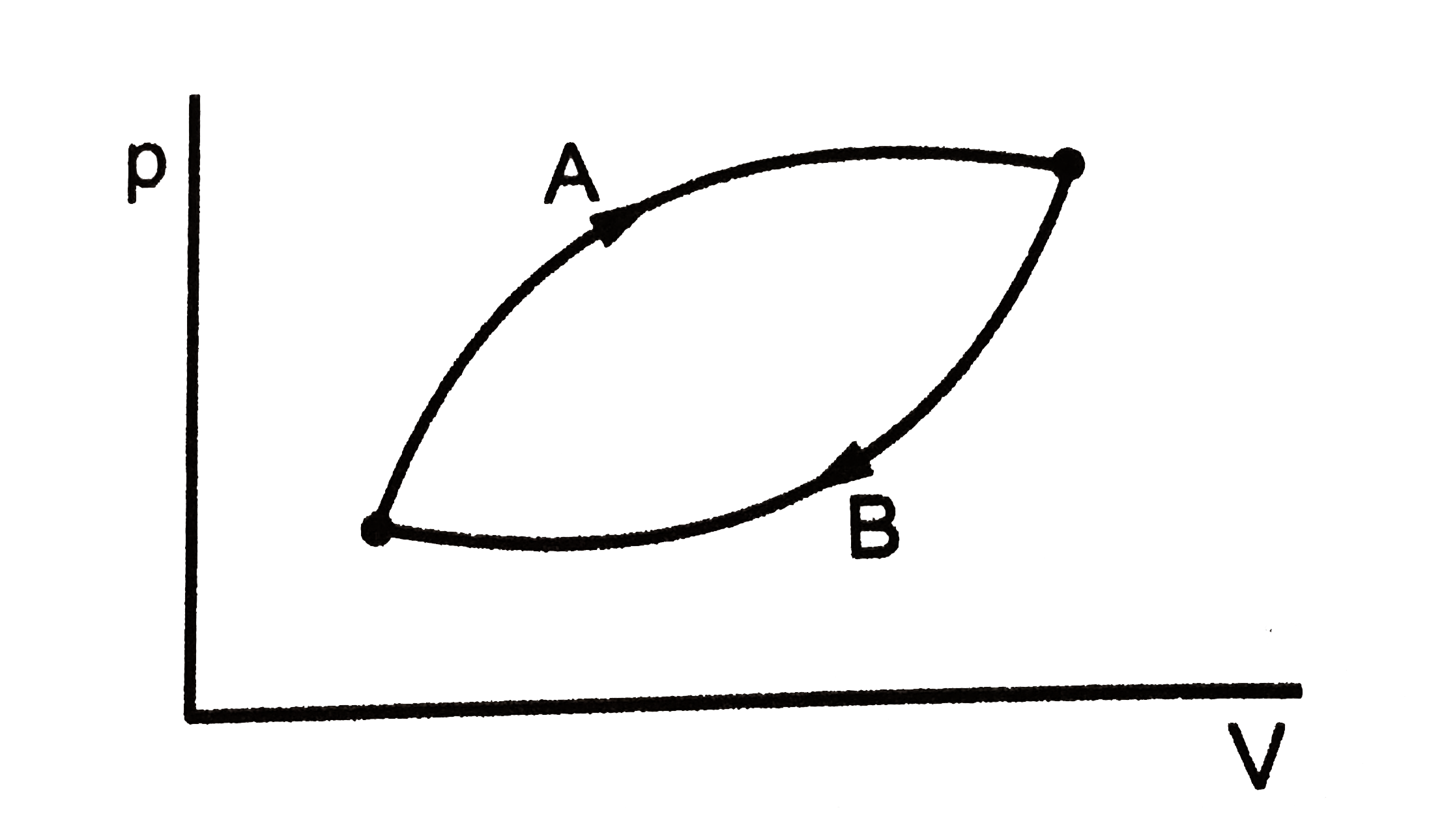 03:49View Solution
03:49View SolutionAn ideal gas is taken from the state A (pressure p, volume V) to the state B (pressure p/2, volume 2V) along a straight line path in the p-V diagram. Select the correct statement from the following
10:22View SolutionA thermally insulated chamber of volume `2V_(0)` is divided by a frictionless piston of area S into two equal parts A and B Part A has an ideal gas at pressure `p_(0)` and temperature `T_(0)` and in part B is vacuum. A massless spring of force constant K is connected with piston and the wall of the container as shown. Initially spring is unstretched. Gas in chamber A is allowed to expand. Let in equilibrium spring is compressed by `x_(0)`. Then
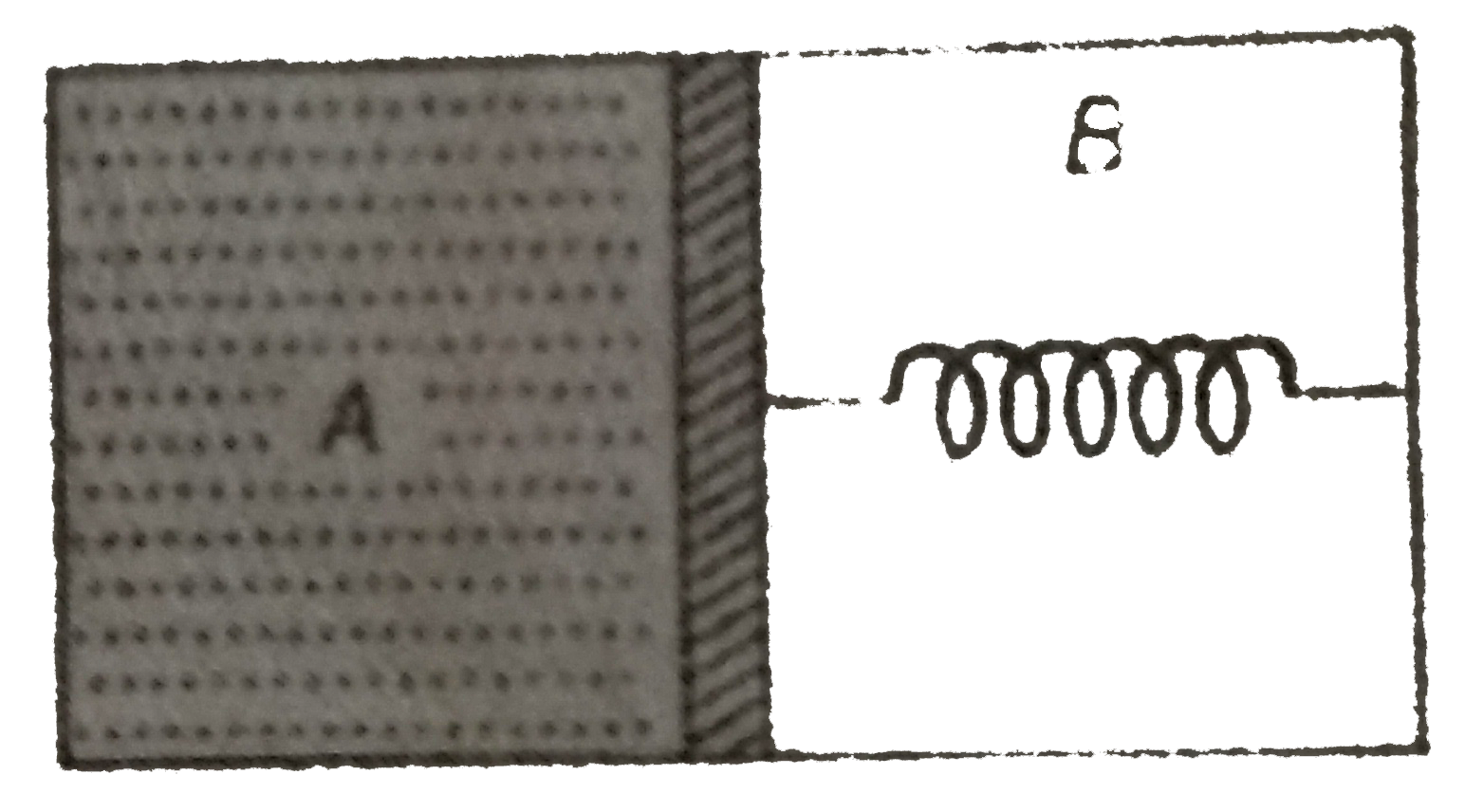 03:10View Solution
03:10View SolutionChoose the correct option:
In the arrangement shown in Fig. gas is thermally insulated. An ideal gas is filled in the cylinder having pressure `P_(0)` (gt atmospheric pressure `P_(a)`). The spring of force constant `K` is initially un-stretched. The piston of mass `m` and area `S` is frictionless. In equilibrium, the piston rises up by distance `x_(0)`, then
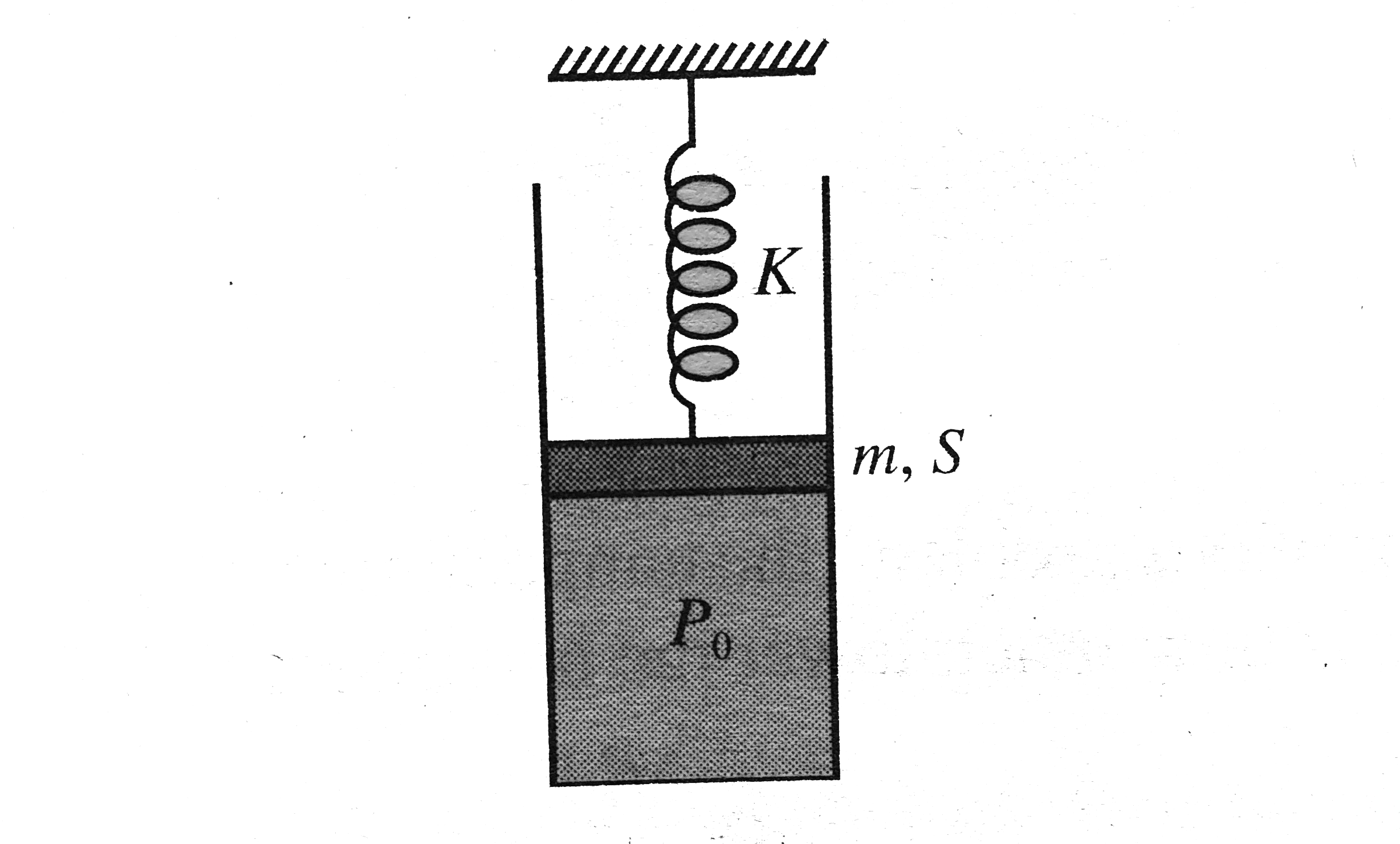 04:14View Solution
04:14View SolutionA gas undergoes change in its state from position `A` to position `B` via three different path as shown in Fig. Select the correct alternatives :

(A)Change in internal energy in all the three paths is equal
(B)In all the three paths heat is absorbed by the gas
(C)Heat absorbed/released by the gas is maximum in path 1
(D)Temperature of the gas first increases and then decreases in path 102:44View SolutionAn ideal gas undergoes a thermodynamic cycle as shown in Fig. Which of the following statement are correct ?
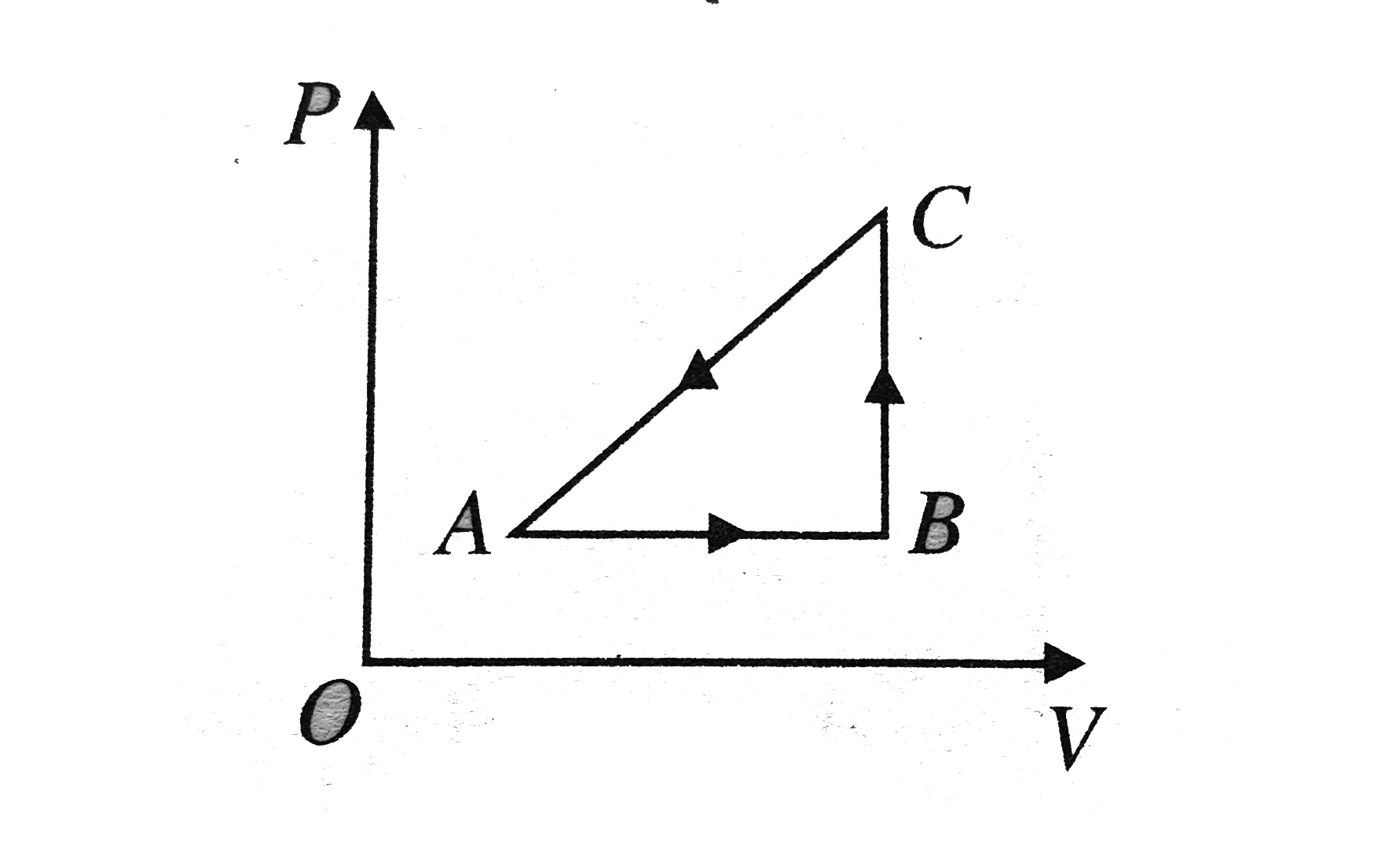 04:56View Solution
04:56View SolutionAt ordinary temperatures, the molecules of an ideal gas have only translational and rotational kinetic energies. At high temperatures they may also have vibrational energy.
As a result of this, at higher temperature02:23View SolutionThe molar heat capacity for an ideal gas
01:33View SolutionA closed vessel contains a mixture of two diatomic gases `A` and `B`. Molar mass of `A` is 16 times that of `B` and mass of gas `A` contained in the vessel is 2 times that of `B`. Which of the following statements are correct ?
04:24View SolutionAn ideal gas undergoes a thermodynamic cycle as shown in figure:
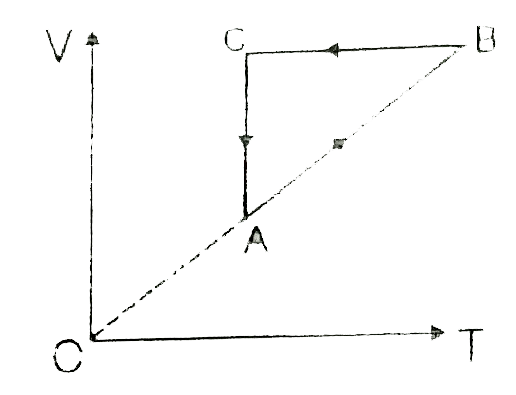
Which of the following graphs represents the same cycle?06:03View SolutionWhich the following statements are correct ?
04:51View SolutionFigure. Shows the `P-V` diagram for a Carnot cycle. In this diagram
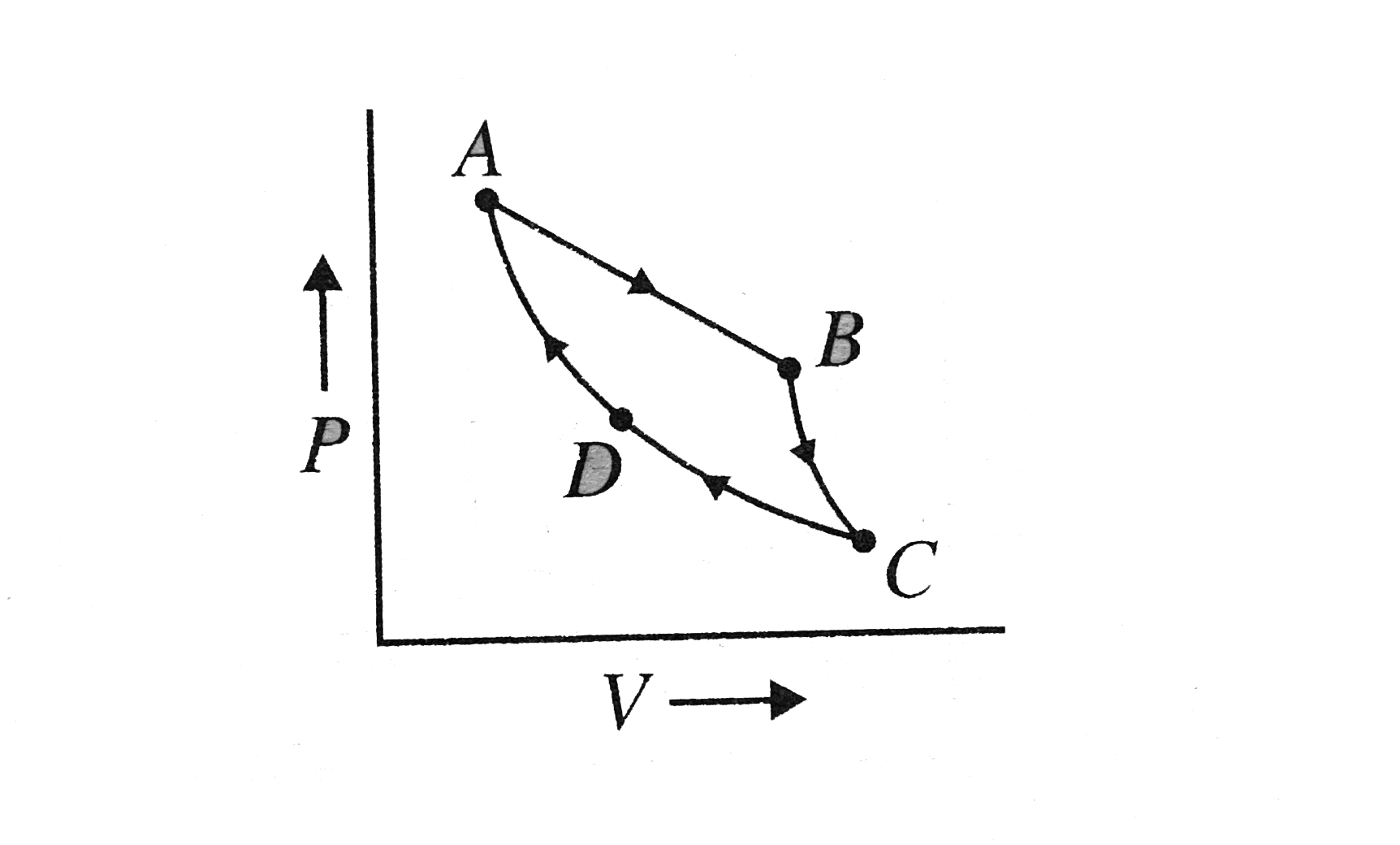 04:13View Solution
04:13View SolutionFigure shows an indicator diagram. During path 1-2-3, 100 cal is given to the system and 40 cal worth work is done. During pat 1-4-3, the work done is 10 cal . Then
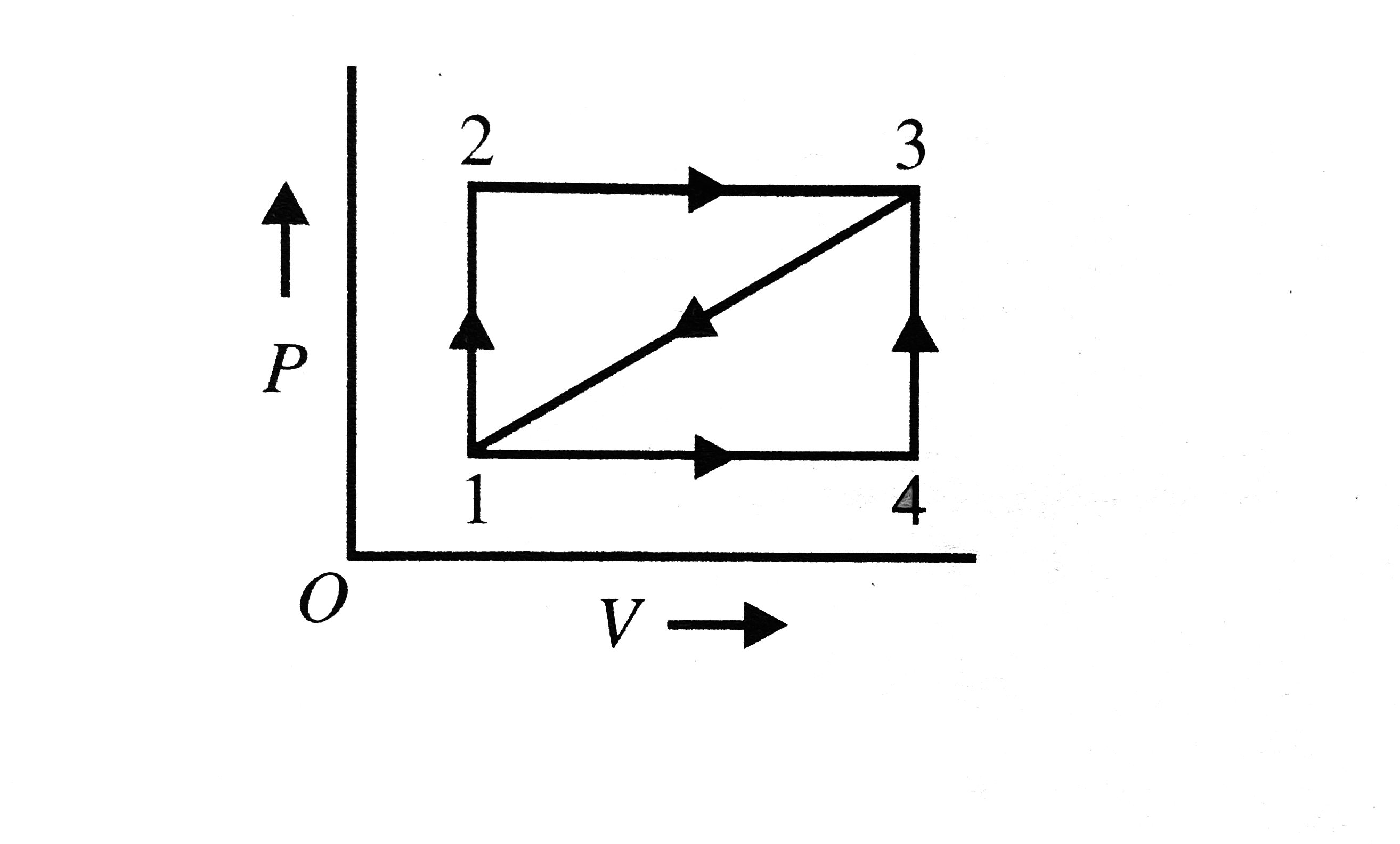 05:36View Solution
05:36View SolutionOne mole of an ideal monatomic gas has initial temperature `T_(0)`, is made to go through the cycle abca shown in Fig. If U denotes the internal energy, then choose the correct alternative
 04:44View Solution
04:44View Solution`P - V` diagram of a cyclic process `ABCA` is as shown in Fig. Choose the correct alternative
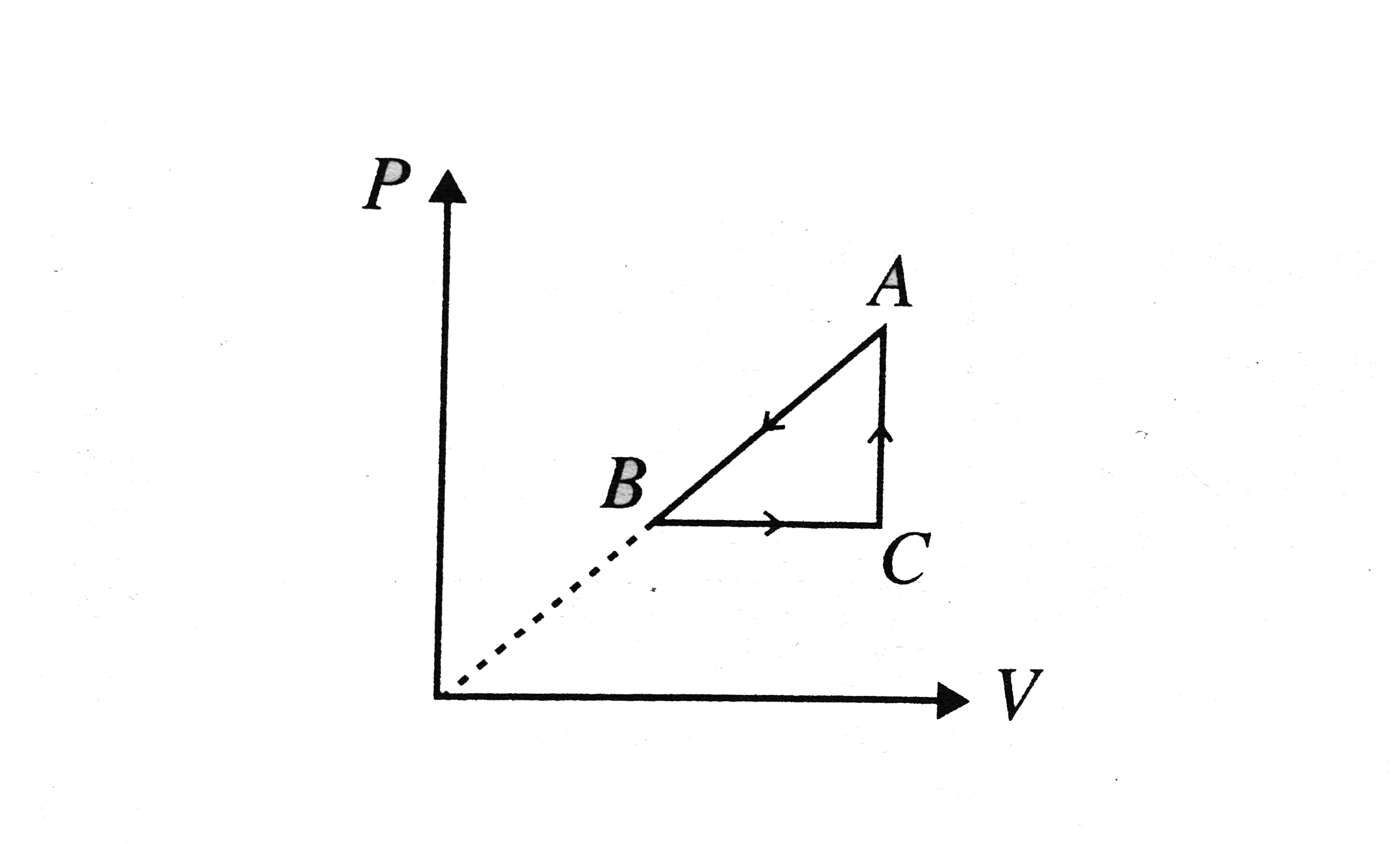
(A)`Delta Q_(ArarrB)=` negative (B)`Delta U_(BrarrC)=` positive (C)`DeltaU_(CrarrA)=` negative (D)`DeltaW_(CAB)=` negative03:19View SolutionDuring the process `AB` of an ideal gas
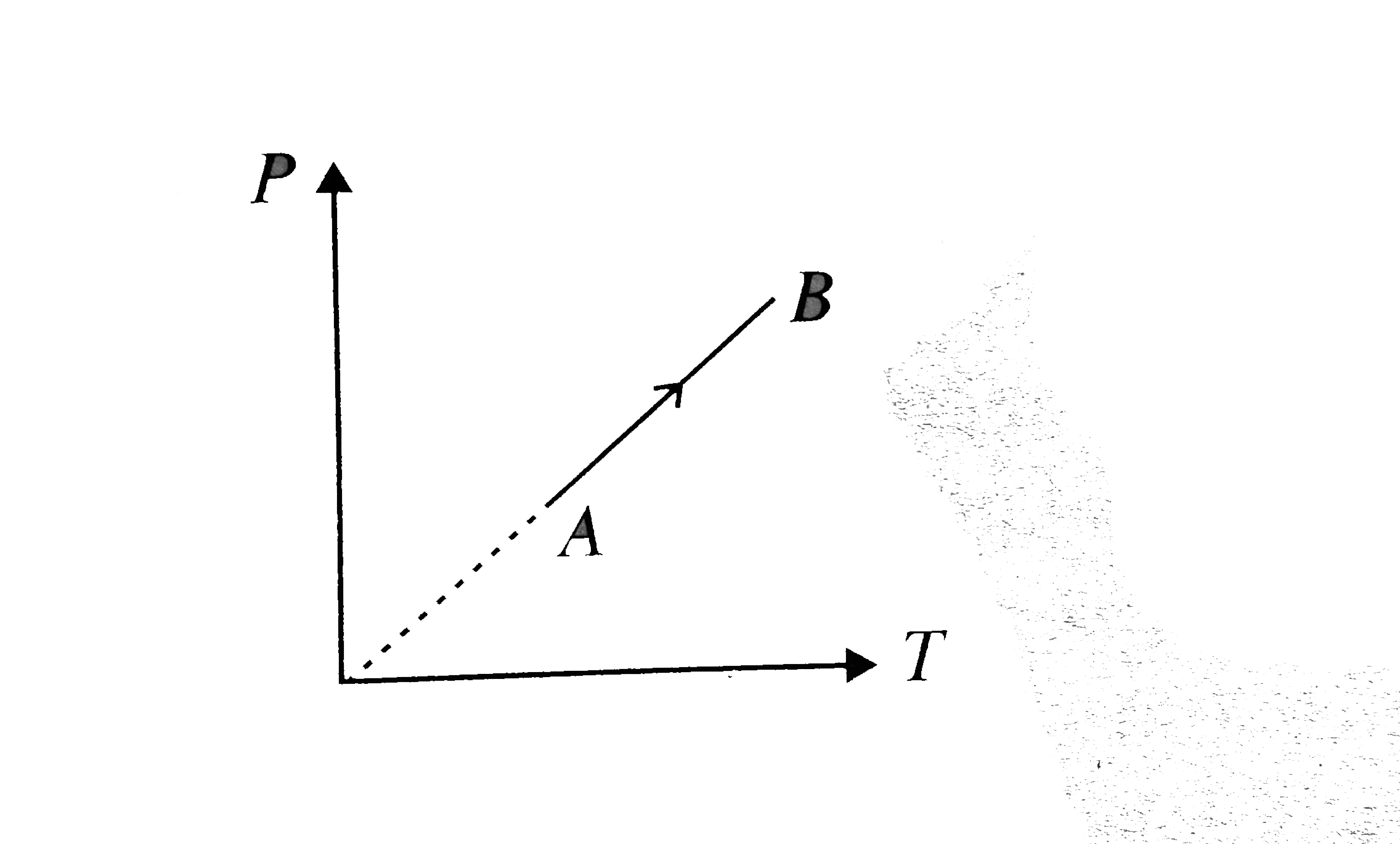 03:45View Solution
03:45View SolutionTemperature versus pressure graph of an ideal gas is shown in figure. During the process AB
 02:13View Solution
02:13View SolutionAn ideal gas undergoes the cyclic process shown in a graph below :
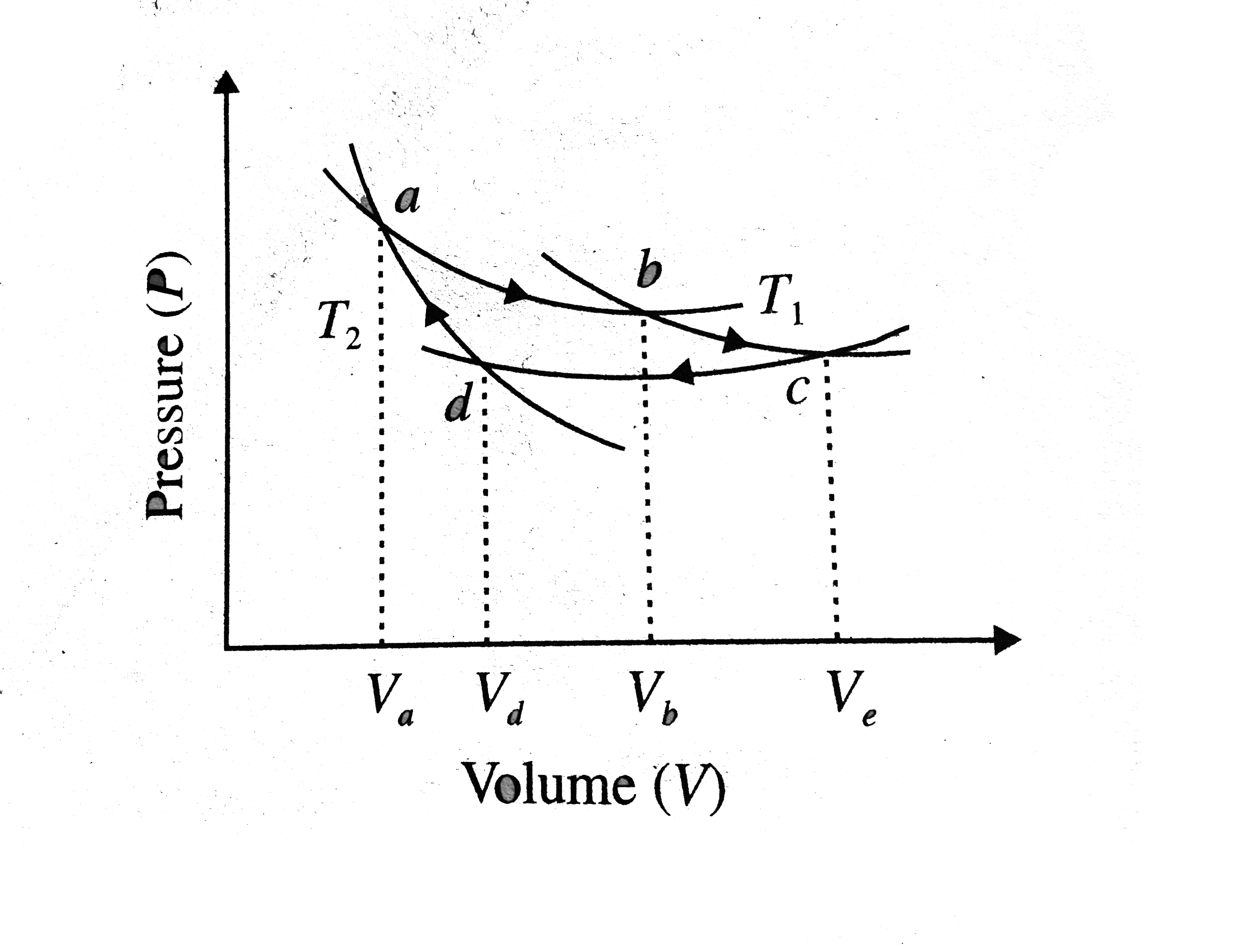 01:54View Solution
01:54View SolutionThe indicator diagram for two processes 1(isothermal) and 2(adiabatic) carrying on an ideal gas is shown in Fig. If `m_(1)` and `m_(2)` be the slopes `(dP//dV)` for process 1 and process 2, respectively, then
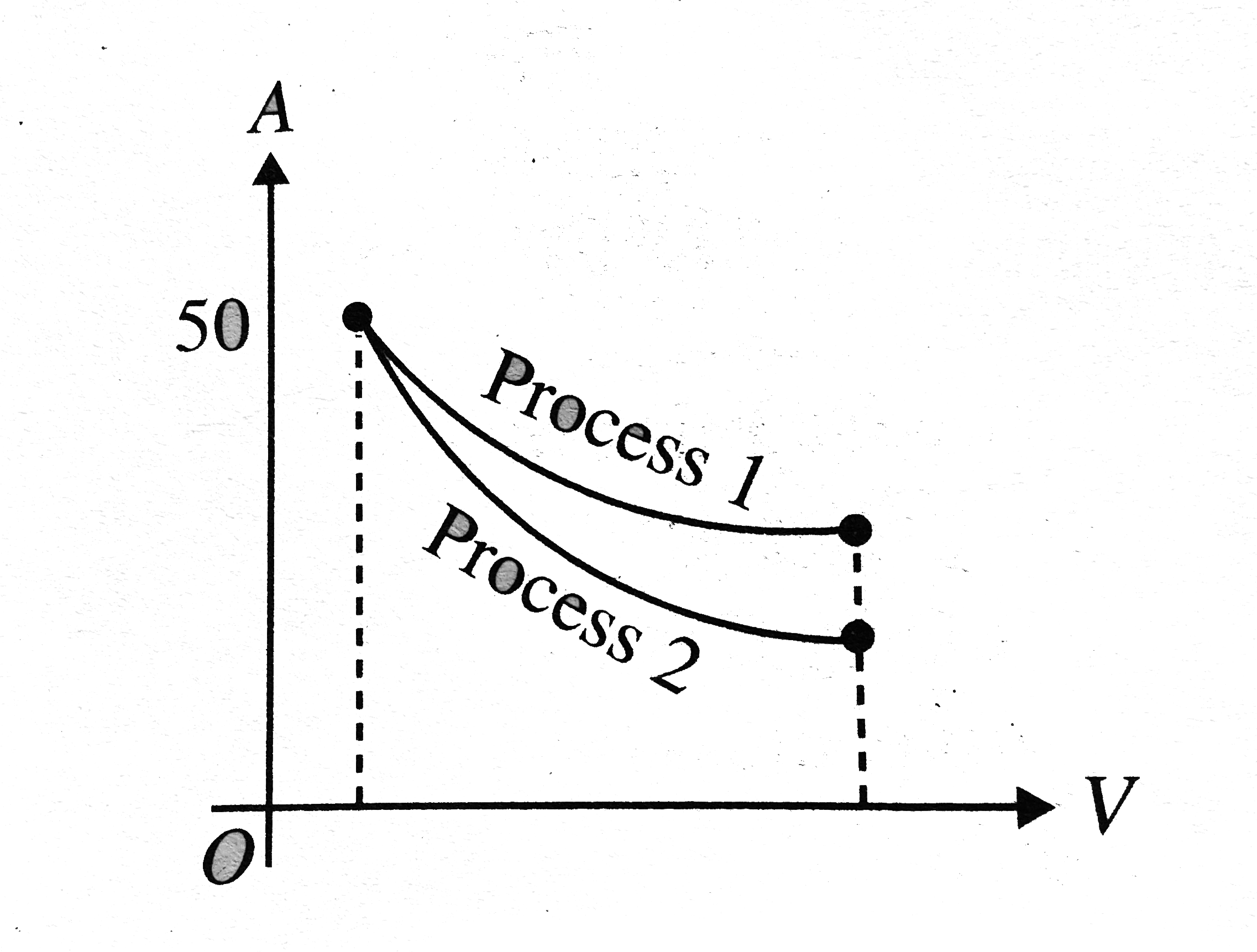 02:22View Solution
02:22View SolutionThree moles of an ideal gas `(C_p=7/2R)` at pressure, `P_A` and temperature `T_A` is isothermally expanded to twice its initial volume. It is then compressed at constant pressure to its original volume. Finally gas is compressed at constant volume to its original pressure `P_A`.
(a) Sketch P-V and P-T diagrams for the complete process.
(b) Calculate the net work done by the gas, and net heat supplied to the gas during the complete process.11:31View SolutionAn ideal gas is taken from the state A (pressure p, volume V) to the state B (pressure `p/2`, volume 2V) along a straight line path in the p-V diagram. Select the correct statement(s) from the following.
06:19View SolutionA partition divides a container having insulated walls into two compartments whose initial paraments are given. The partition is a conducting wall which can move freely without friction. Which of the following statements is/are correct, with reference to the final equilibrium position ?
 06:53View Solution
06:53View SolutionDuring an experiment, an ideal gas is found to obey a condition `(p^2)/(rho) = "constant"`. (`rho` = density of the gas). The gas is initially at temperature (T), pressure (p) and density `rho`. The gas expands such that density changes to `rho//2`.
04:55View SolutionPick the correct statement (s) :
04:10View SolutionAn ideal gas undergoes an expansion from a state with temperature `T_(1)` and volume `V_(1)` through three different polytropic processes `A, B` and `C` as shown in the `P - V` diagram. If `|Delta E_(A)|, |Delta E_(B)|` and `|Delta E_(C )|` be the magnitude of changes in internal energy along the three paths respectively, then :
 07:33View Solution
07:33View SolutionA system undergoes three quasi-static process sequentially as indicated in Fig. 1-2 is an isobaric process, 2-3 is a polytropic process with `gamma = 4//3` and 3-1 is a process in which `PV` = constant. `P_(2) = P_(1) = 4 xx 10^(5) N//m^(2), P_(3) = 1 xx 10^(5) N//m^(2)` and `V_(1) = 1 m^(3)`.
The heat transfer for the cycle is `Delta Q`, the change in internal energy is `Delta U` and the work done is `Delta W`. Then
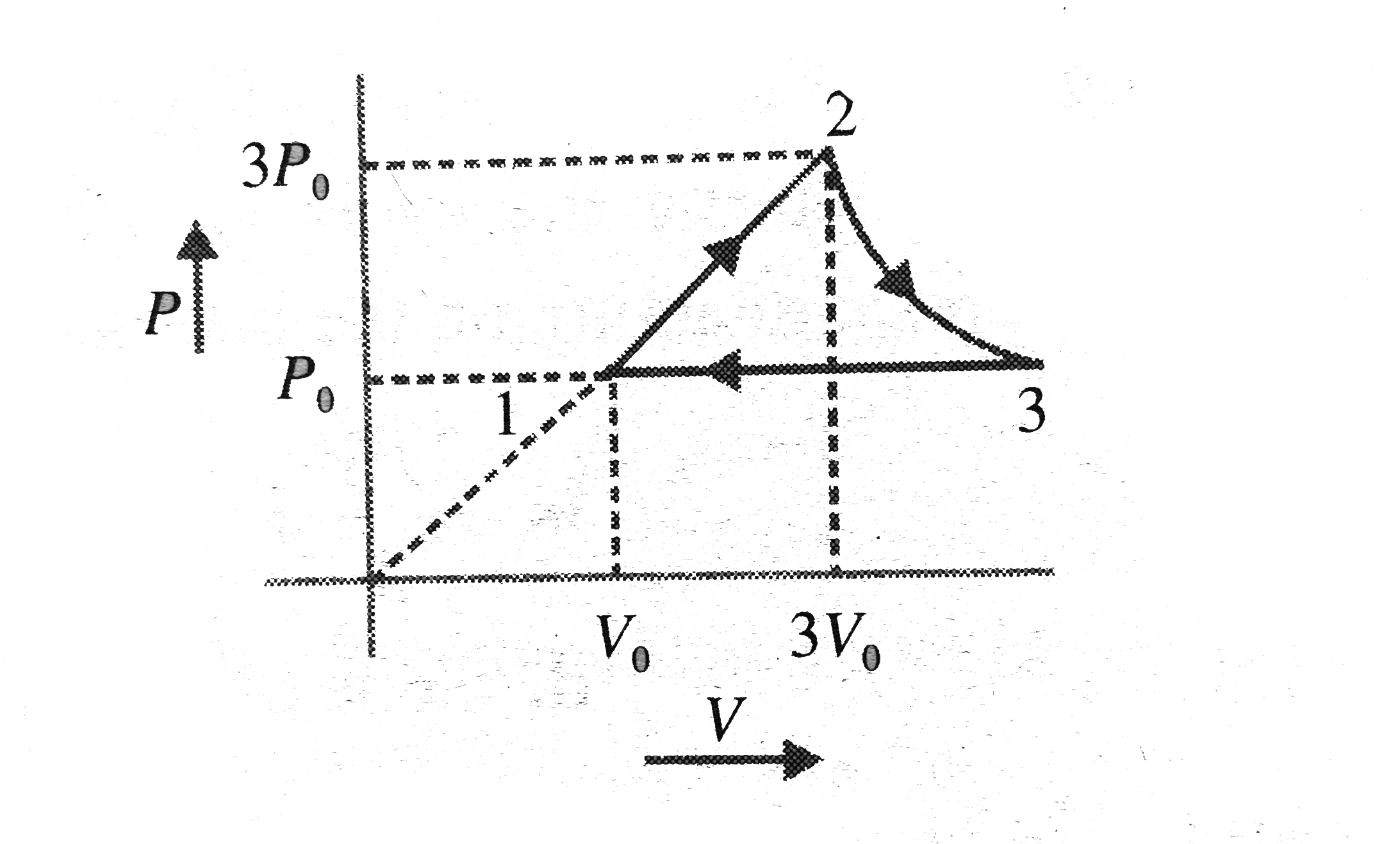 View Solution
View SolutionAn insulated `0.2 m^(3)` tank contains helium at `1200 kPa` and `47^(@)C`. A valve is now opened, allowing some helium to escaped. The valve is closed when one-half of the initial mass has escaped. The temperature of the gas is `(root(3)(4) =16)`
03:55View SolutionA gas in container `A` is in thermal equilibrium with another gas in container `B`. Both contain equal masses of the two gases. Which of the following can be true ?
03:19View Solution
Multiple Corrects questions and complete solutions for chapter KINETIC THEORY OF GASES AND FIRST LAW OF THERMODYNAMICS of CENGAGE PHYSICS (ENGLISH) of Class 11
